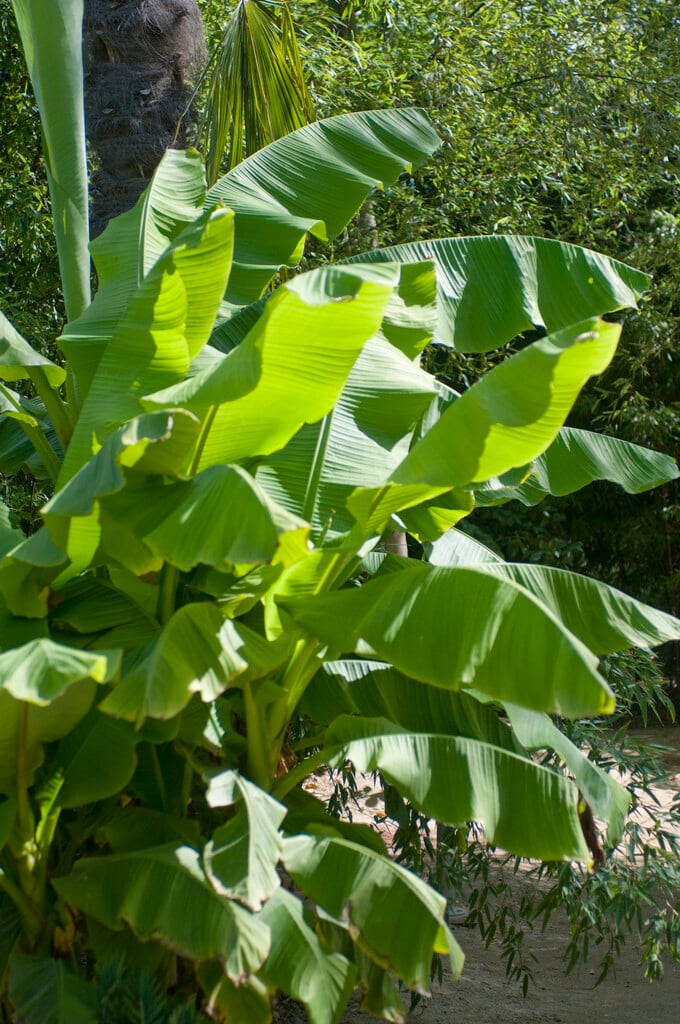Ensete ventricosum
Ethiopian banana
A tender perennial with erect, narrowly oblong leaves to 3m in length, the midrib red beneath, and white flowers hidden amongst deep red bracts, but rarely produced in cultivation
Size
Ultimate height
2.5–4 metresTime to ultimate height
10–20 yearsUltimate spread
2.5–4 metresGrowing conditions
Moisture
Well–drainedpH
Acid, Alkaline, NeutralColour & scent
| Stem | Flower | Foliage | Fruit | |
| Spring | Green | |||
|---|---|---|---|---|
| Summer | Red White | Green | ||
| Autumn | Green | |||
| Winter | Green |
Position
- Full sun
- Partial shade
Aspect
South–facing or West–facing
Exposure
Sheltered Hardiness
H2Botanical details
- Family
- Musaceae
- Native to GB / Ireland
- No
- Foliage
- Evergreen
- Habit
- Tufted
- Genus
Ensete are robust evergreen perennials forming a short stem, with large paddle-shaped leaves and pendent terminal clusters of cup-shaped flowers, followed by dry banana-like fruits
- Name status
Correct
- Plant range
- E Tropical Africa
How to grow
Cultivation
Grow outdoors in frost-free area in humus-rich soil in full sun or partial shade. Grow under glass in temperate greenhouse in peat-free, loam-based compost with shade from hot sun. Keep well ventilated
Propagation
Propagate by seed. Germination is erratic
Suggested planting locations and garden types
- City and courtyard gardens
- Patio and container plants
- Architectural
- Wall side borders
Pruning
Remove dead leaves, cutting no lower than the base of each leaf blade
Pests
May be susceptible to glasshouse red spider mite and aphids
Diseases
Generally disease-free
Get involved
The Royal Horticultural Society is the UK’s leading gardening charity. We aim to enrich everyone’s life through plants, and make the UK a greener and more beautiful place.
